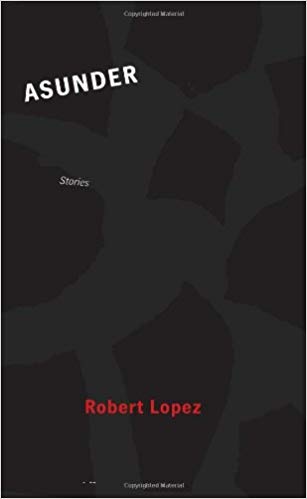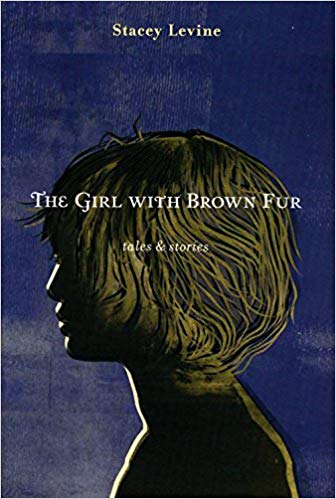In the introduction to Otherwise Known As The Human Condition, Geoff Dyer writes of how he first broached the idea of an essay collection with his editor:
[H]e asked if these pieces would be linked, if there might be some way of passing off these bits and bobs as a coherent book organized around a defining theme. Would it be possible, for example, to compile a book of my writings about photography? Or American writers?
Possible, yes, but, from my point of view, not at all desirable because it was, precisely, the unruly range of my concerns that I was keen to see represented in a single volume.
…
It seemed to me that this variegation might even give the collection a kind of unity of coherence. The more varied the pieces, I argued, the more obviously they needed to be seen together as the work of one person—because the only thing they had in common was that they were by that person.
I find Dyer’s words heartening given that I regularly break the first rule of blogging by resolutely refusing to embrace a unifying theme. While some people blog about poetry or celebrities or being gay or being a mom, I claim to blog about “the power of words” and use that catch-all as license to rant about atonement theology and copyright reform and Stephen Harper’s political leanings. I trust that because all my opinions share the same DNA, their relatedness will be obvious even if my brain fails to give them a sense of unity.
The curious thing about Dyer’s introduction is that it feels like it belongs to another era. Although Barthes quietly proclaimed the death of the author more than 40 years ago, the sudden rise of the ebook is moving people to shout this news from the mountaintop. Blogging pranks, ehoaxes and spam ebooks have produced a reversal of our natural presumption. Instead of giving authorship the benefit of the doubt, we assume that a written work has been manufactured by a process—that there is no “real” person behind the author. Dorothy pulls away the curtain, and instead of finding a man posing as a wizard, she finds an app, or a corporation, or a marketing firm. Dyer’s unifying author sounds like a quaint artifact from an earlier time.
This has been compounded by online lit journals, like >killauthor, which deliberately promote this reversal of presumption, and by advocates of the transmedia novel who see the ebook as a temporary expedient bridging the gap between traditional print and a brave new immersive literary experience. The challenge of the transmedia novel, like the Hollywood film, is that it cannot be the product of a solitary person scribbling on a pad or banging on a keyboard; it requires legions of disparate talents collaborating to create a single work. Faber’s Wasteland app is just a toe-dip in the shallow end of a gigantic pool.
To mark the first anniversary of the Toronto G20 Summit, I asked whether a novel about that event might be disingenuous since the novel, as traditional publishing has produced it, is very much a creature of the middle class (and Toronto’s middle class was very much complicit with the ills of that event). Part of what makes the novel a creature of the middle class is the way in which traditional publishing produces the author. The interview, the book tour, the readings, the signings, the stories of drinking, of acerbic witticisms, the tales that grow into legends that grow into myths. After 40 years, one becomes Margaret Atwood. But in the age of social media, one must go one further: author must become brand. Again, one becomes Margaret Atwood with her bazillion followers on Twitter. The answer to the middle class novel, I suggested, was to allow the conventions of the novel to disintegrate. Do it as an act of protest. Why not begin by disintegrating the convention of the branded author?
One way to undermine the convention of the branded author is to rejig the authorial voice, itself a creature of traditional publishing. There is a myth that a successful author needs a strong and distinctive voice. It’s a self-fulfilling myth, of course, since what determines success is tautologically defined. (That’s a really arcane joke, btw.) There are plenty of examples of writing that illustrate why the myth of the strong authorial voice is just that—a myth, and like every other myth in the internet age, it may safely be thrown in the garbage.
I’ve just finished two books, both from Dzanc, which illustrate alternative approaches (call them anti-approaches) to the authorial voice. They are Asunder, by Robert Lopez, and The Girl With Brown Fur, by Stacey Levine. Let’s adopt the presumption of former times and say that these authors are real people.
Both books are collections of short stories. That’s not a coincidence. If you’re writing against the grain of the middle class novel, the obvious starting place is to stop writing novels. Write short pieces instead. Write for the internet attention span. Almost by necessity, a collection of short stories forces the reader into a world of shifting characters and narrative voices.

In Asunder, Lopez writes most of his stories as first-person narrative—or anti-narrative, as the case may be. “I” rarely has a name much less a history. “I” feels disembodied, a floating eye that drifts over the landscape, a being in the middle of a dissociative episode. The title story “Asunder” takes the “I” to its most generic, calling the narrator “someone in particular”. This is actually kind of funny. Feel free to laugh. Here is an excerpt from the story:
THIS IS TO BE WITHOUT CEREMONY.
This is to be the marriage of disparate ideas.
Concerning someone in particular and the kind of woman who signs the guest book at her own son’s wake. On the surface it’s complicated. Deeper down it has to do with something else altogether.
Someone in particular wanted to compose a story without characters and details. Without a setting. No themes, no ambiguities. Being that someone in particular doesn’t consider himself a writer he feels he can dispense with many rules and regulations.
And then the kind of woman that takes twenty-five pills a day.
No flashbacks, no dialogue, no obscure academic references.
What’s more is someone in particular is shamefully ignorant when it comes to the rules and regulations. For instance, he has no idea what a split infinitive is.
And then the kind of woman who sends her twelve-year-old grandson a birthday card with a five dollar bill taped to it and writes I am broke under her signature.
Any use of simile or metaphor or foreshadowing or alliteration or onomatopoeia would be unnecessary in such a story. Nothing at all synecdochical.
Even if someone in particular knew what any of that meant.
If you are on the NYT Bestseller list for fiction, be advised that Lopez is poking gentle fun at you. And you deserve it.
Let me mention one more story for good measure. It’s called “The Allergies” and is all of 365 words long. Once upon a time, “I” had all the usual middle class stuff—job, gadgets, car. “Now my life is dry toast for breakfast and the allergies.” Because of the allergies, “I” never goes out anymore. I (your blogging voice) read this story almost as a parable of my own life in the world of arts and letters. Once, I did what normal people do, reading lovely novels about ordinary people who confront great obstacles, dig deep, find untapped moral reserves, rise up, overcome, apotheosis, redemption, yada, yada, yada. But I developed an allergy and now the only books I can bear to read are books whose characters and settings are covered in tin foil.

In The Girl With Brown Fur, Stacey Levine offers a similar detachment. Her first story, “Uppsala”, opens with generic characters which, like those in “Asunder”, push against our assumptions about how readers should engage with the writing.
We come from a bad family and we are disgraced.
“What time do we get there?” asks Brother.
“Stop cluttering your mind with those kinds of thoughts,” answers Mother. It is Brother’s nineteenth birthday, and we are driving off to the cabin.
One thing is certain: this sure as hell ain’t Celie from The Color Purple. We aren’t invited into a close identification with characters. The fictionalness of the fiction is on display. It’s like we’ve stepped into a house without any drywall or finishing carpentry just so the builder can remind us of how faux the finishing really is.
Since I mentioned a parable from Asunder, it seems only fair to mention a parable from Levine’s book too. I find myself drawn to the story titled “Sausage” which I read as a parable of contemporary commercial writing (although, in fairness, it could be read more generally as a parable of any commercial production, or even and perhaps especially of religion). The narrator works in a factory pedalling an upside down bicycle machine that cranks out sausages. Mysteriously, the sausage factory is located in “France” with quotation marks. There is a warder who supervises sausage production. The sausage maker decides to take the misdeeds of a former, but now dead, sausage maker. It will be an act of atonement which gives the sausage maker a measure of freedom. However, management sees through the ruse: all the sausage maker wants to do is to use the act of atonement to purchase indulgences. The sausage maker isn’t really devoted to the trade of sausage making. The sausage maker sneaks sleeping pills in order to escape from the body. A new sausage-making tax is introduced which will soon be extended to the means of production. Due to global pressures, the work day will be eliminated …
I read sausage making as a stand-in for any creative process—like writing a novel—which has been wrenched from its organic roots and thrown onto the factory floor. The sausage maker concludes with the questions: “In the next decade, who will I be? Will we keep our gains?” Those are questions on every author’s lips nowadays.